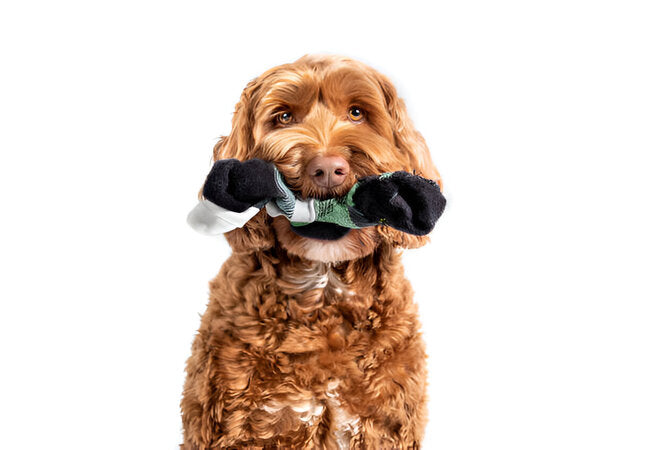Canine Compulsive Behavior: Understanding & Managing Canine OCD — Vet Guide 2025 ✅🐾

In this article
Canine Compulsive Behavior: Understanding & Managing Canine OCD—Vet Guide 2025 🐾
By Dr. Duncan Houston BVSc
Compulsive behaviors in dogs—like spinning, tail chasing, fly‑biting, shadow chasing, flank sucking, pacing, or excessive licking—aren’t just quirks. In 2025, veterinarians classify these as Canine Compulsive Disorders (CCD). These behaviors resemble obsessive‑compulsive disorder in humans but stem from stress, genetics, medical issues, or a combination. Let’s break down the causes, diagnosis, and compassionate treatment to help your dog live happily and healthily. ❤️
1. What Is a Canine Compulsive Disorder? 🧠
CCD is characterized by repetitive, fixed behaviors that serve no obvious purpose and can interfere with a dog’s life—sleep, eating, and interaction—even leading to self‑injury. Examples include:
- Tail chasing or spinning
- Flank sucking or licking (acral lick granuloma)
- “Fly‑biting” (air snapping)
- Shadow/light chasing
- Pacing, obsessive barking, or staring into space
- Pica (eating non‑food items)
These often derive from normal behaviors gone extreme.
2. Why Do Dogs Develop CCD? Causes & Risks
Key contributing factors include:
- Stress, anxiety, frustration: Compulsive acts release endorphins, calming the dog—reinforcing the behavior under stress.
- Genetic predisposition: Linked to certain breeds (bull terriers, German Shepherds, Dobermans) via chromosome 7.
- Medical triggers: Pain (arthritis, skin issues), parasites, GI upset, or even seizures and neurological conditions may underlie symptoms.
- Early onset: Usually develops between 12–36 months of age.
3. Recognizing Signs of CCD
Look for:
- Ritualistic patterns: Repeated the same way, every day
- Hard to interrupt: Continues despite attempts to redirect.
- Evidence of distress: Vocalization, pacing, self‑trauma, neglecting basic needs.
- Examples: tail chasing till injury, flank licking until sore, snapping at unseen flies.
Prevalence is low—around 2% of dogs—but these cases significantly impact their well‑being.
4. Diagnosis: Vet & Specialist Assessment ✔️
Diagnosis requires ruling out medical causes:
- Physical exam, blood work, urinalysis
- Assess for pain: joint, dermatologic exam
- Neurologic evaluation—seizures, brain disorders
- Behavior evaluation: patterns, triggers, level of interruption
Only when medical causes are ruled out can a confirmed CCD diagnosis be made. Relapses are common if underlying stress or illness remains.
5. Proven Treatment Approaches
Effective management combines:
- Environmental modification: Remove stress triggers, maintain predictable routines.
- Physical & mental enrichment: Regular walks, puzzles, training, interactive play.
- Behavior training: Redirect compulsive behavior toward alternative tasks via positive reinforcement.
-
Medication & nutraceuticals:
- SSRIs (fluoxetine, clomipramine) — over 50% reduction in symptoms.
- Anticonvulsants for seizure-linked cases.
- Nutraceuticals like α‑s1‑casozepine (Zylkene®) support behavior reduction.
- Physical treatments: Manage lesions (E‑collars, laser therapy for lick granulomas).
6. Case Study: Multimodal Recovery
A dog with spinning & self‑mutilation received medical checks, SsRI, Zylkene, positive training, enrichment, and safe rest areas. The ritual faded, healing followed—highlighting CCD’s success with combined therapies.
7. Breed-Specific Considerations
- Bull Terriers—spinning/searching
- German Shepherds—tail chasing
- Dobermans—flank sucking
- Cavalier King Charles—fly‑biting
Not all dogs of these breeds develop CCD, but genetic links mean early monitoring is crucial.
8. Owner Actions: 2025 Action Plan 📋
- 📌 Track Behavior: frequency, trigger, duration, redirection attempts
- 🏥 Vet Exam: rule out medical issues
- 🏃 Enrichment: exercise, puzzles, social time
- 🔄 Behavior Training: redirect with reward
- 💊 Medication: consult vet or behaviorist
- 💤 Manage environment: rest zones, reduce stress
- 📈 Monitor Progress: adjust over time; expect gradual improvement
9. FAQs 💬
• Can CCD be cured?
While some dogs respond extremely well, most require long-term management with environmental structure, enrichment, and sometimes medication.
• Is punishment effective?
Never. Punishment increases stress and worsens compulsions.
• When is medication necessary?
Severe or self‑trauma behaviors often need SSRIs or anticonvulsants—used alongside training and enrichment.
• Can I manage this at home?
Mild cases might respond to consistent enrichment and training, but serious or disruptive compulsions require veterinary or behaviorist guidance.
10. Ask A Vet, Woopf & Purrz Support 🧡
Our app lets you log behaviors, connect with vet behaviorists 24/7, and access enrichment tools and calming products from Woopf and Purrz to support multimodal treatment.
Conclusion ❤️
Canine compulsive disorders are complex but manageable. In 2025, combining medical care, enrichment, routine, behavior therapy, and medications offers dogs a chance at a full, comfortable life. If your dog displays repetitive, distressing behavior, start with your vet, utilize structured enrichment, and reach out to Ask A Vet, Woopf, and Purrz for guidance. Your dedication can break the cycle and rebuild joy. 🐕
Need help now? Visit AskAVet.com and download the Ask A Vet app—expert support is just a tap away.


